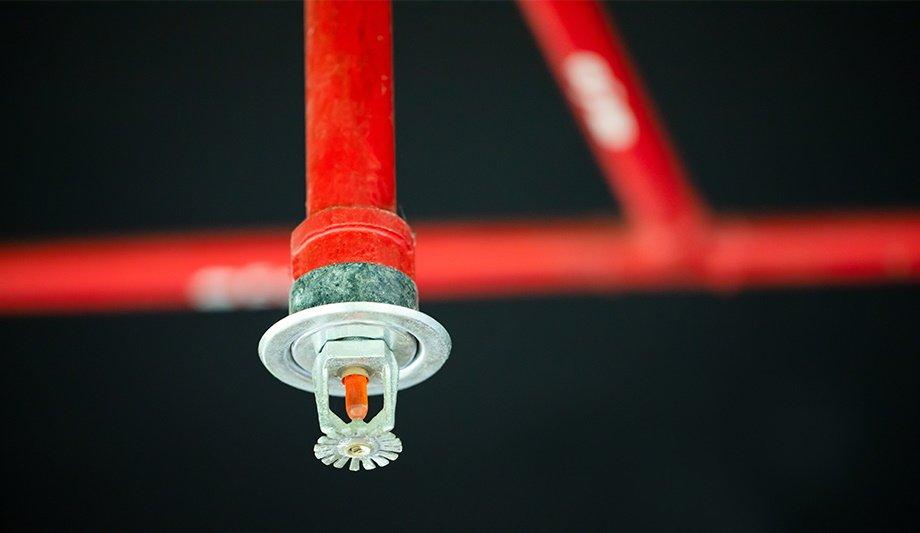The fire sprinkler system in your building is a critical safety measure and, when needed, it can save lives. Still, even the best systems can malfunction, and sprinklers do occasionally fail. When they do, they can drench the interior of your building, damaging everything from furniture and personal belongings to drywall and building materials.
As a property manager, dealing with fire sprinkler failure can feel overwhelming. What do you do next? Where do you start? And why did the sprinkler system fail in the first place? In this post, we’ll discuss the common causes of accidental discharge, and what to do if it happens to you.
Reasons for Fire Sprinkler Systems Failure
Today, all building fire sprinkler systems must meet NFPA 13 standards. These National Fire Protection Association benchmarks define safety requirements for components and installation, and help ensure that sprinkler systems are well maintained and ready to perform.
Still, fire sprinkler systems can fail. Here are a few of the most common culprits:
- Aging parts
- Building renovations (collisions with construction equipment, displacement or disturbance, etc.)
- Incorrectly placed heating systems that activate sprinklers
- Vulnerable pipes that freeze and cause sprinkler heads to burst
- Corrosion
Fire sprinkler malfunctions can be incredibly problematic, causing extensive damage to your building
Regardless of what causes the sprinklers to discharge accidentally, fire sprinkler malfunctions can be incredibly problematic, causing extensive damage to your building and requiring costly repairs from a water damage repair contractor.
5 Things to do if Your Sprinklers Fail
There are no flames in your building, but your sprinklers are soaking everything in sight. You have to move quickly to avoid even more damage.
Stay calm and follow these five steps:
- Get everyone out
Even if there’s not an active fire in the building, water poses its own set of dangers. To avoid problematic slip and fall conditions, get everyone out of the area immediately. Move them to a safe location outside the building, preferably one you’ve agreed on in a previously established evacuation plan.
- Shut off electrical equipment
Water and electricity are a deadly combination. To avoid electrical shocks, shut off all nearby electrical equipment and appliances, and then, turn off the building’s main power supply, as you exit the building.
- Turn off the water main
Instead of wasting time shutting off broken sprinkler heads individually, go to the building’s main water supply immediately and shut it off at the valve. This will stop all water flow and prevent additional water damage.
- Take photos of the scene
Once it’s safe to re-enter the building, document the scene. Use your smartphone to take photos of broken sprinkler heads or anything else you believe may have caused the accidental discharge.
Additionally, take photos of the damage the sprinklers caused to floors, walls, personal belongings, and more. These photos can help response specialists understand the cause of the malfunction and may streamline your insurance claims process.
- Contact a restoration specialist
Even if your water damage looks minimal, you’ll need to contact a skilled water damage restoration expert, like the Chicago-based maintenance and service company, ServiceMaster Restoration by Zaba.
Accidental sprinkler discharges soak drywall, destroy carpets and textiles, and lead to dangerous mold and mildew growth, which can happen just 24-48 hours after water exposure. Prevent worsening damage and the dangerous conditions by contacting a sprinkler repair specialist right away.
Cleanup and water damage restoration services
Using your documentation, your insurance company will work to determine the cause of the sprinkler failure
Using your documentation, your insurance company will work to determine the cause of the sprinkler failure. This can be a lengthy process that takes weeks or even months.
As that happens, your cleanup team will focus on providing water damage restoration services. Typically, fire sprinkler water damage involves ‘blackwater’- a dangerous mixture of sediments and other contaminants that leave behind an unpleasant smell and a film that can destroy belongings.
To reclaim your space, the water damage restoration service will focus on extracting the remaining water, drying the space to prevent mold and mildew formation, and decontaminating all surfaces. This is a critical step that you can’t afford to rush. Work with the best water damage cleanup company you can find to ensure positive results.
Protecting Your Sprinkler Systems in the Future
While it’s impossible to completely avoid every accidental discharge, there are certain steps you can take to safeguard your sprinkler system.
Proper maintenance, for example, allows you to avoid preventable issues that could lead to malfunction. You should also take care to keep all remodeling and construction work away from sprinkler heads and systems to avoid accidental damage.
These are simple tips, but they can help keep your building and tenants safe and dry - both now and in the future.

